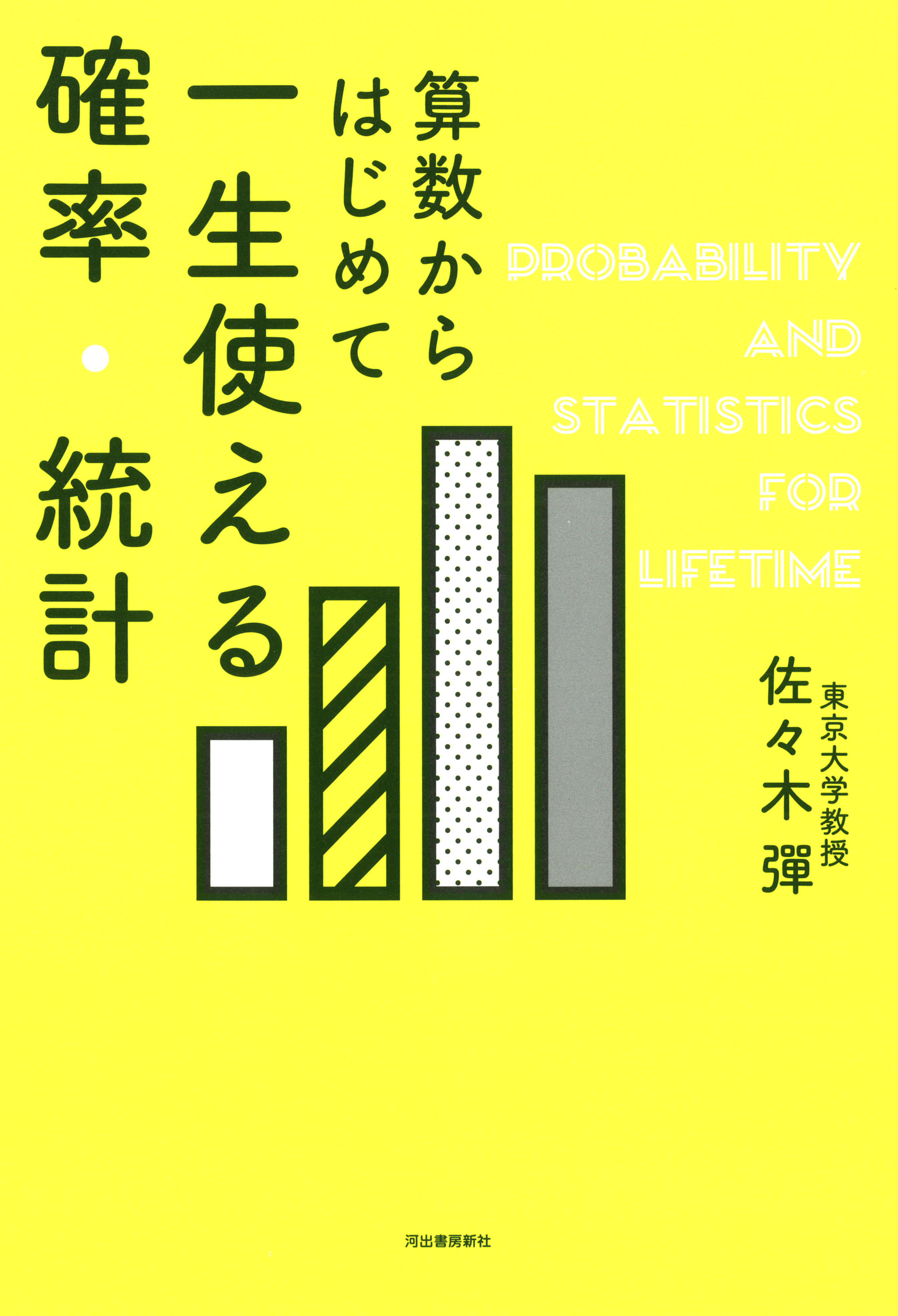
Title
Sansuu kara hajimete isshou tsukaeru Kakuritsu・Toukei (Probability and Statistics -- from cradle to grave)
Size
224 pages
Language
Japanese
Released
December 16, 2019
ISBN
978-4-309-24864-6
Published by
KAWADE SHOBO SHINSHA
Book Info
See Book Availability at Library
Japanese Page
Schools spend substantial time and effort teaching mathematics. Once we graduate, however, how often do we actually use quadratic equations and trigonometrics in our real life? Meanwhile we do use probability and statistics every day. Were we to rewrite maths textbooks pragmatically, much of the contents should focus on stats.
As a starter, we commence with some of those familiar trivia such as why the lotto is popular despite it is obviously an unfair gamble, and what school grademarks tell us about the pupil, noting that top cream students tend to do well in their later lives on average whilst there are, as we all know, many exceptions and counterexamples.
We then proceed on to the main body of the book, consisting of three parts. We first review our primary school “stats” which actually refers to graphs, tables, and descriptive statistics such as the average. What is the difference between a bar chart and a histogram? How regression and correlation coefficients differ? It is indeed a delightful discovery that one can make sense of statistical data to a considerable extent even without indepth analysis.
Secondly, we overview basic nuts and bolts of statistical analysis, such as statistical inference and hypothesis testing. Essentially, we view data as a random draw from an underlying probability distribution, called the data generating process, of which we are typically interested to reconstruct a certain parameter. Does 5% significance mean that the regressor (explanatory variable) in question is indeed influential with probability no less than 95 percent? Should the true parameter value lie within its 99% confidence interval with probability 99 percent?
Third and finally, we discuss how statistical analysis is applied to empirical research and decision making. Statistical analysis, inference or testing, may serve for two purposes: prediction, and intervention. Does it make sense to infer mathematical ability based upon language scores of the same students? Does it also make sense to give extra language classes to boost the students’ maths performance? In other words, is the correlation causal, or merely symptomatic? Reduced form regression or correlation suffices for purely predictive purposes, whilst structural analysis is requisite to prove causality.
Overall, stats is like observing children to reconstruct their foreparents. Obviously, we cannot observe all of their distant cousins. Our empirical observations consist of only those particular lineal paths which happen to be presented in front of our beholding eyes. More often than not, those other lineages which fail to be observed have various reasons to remain unobserved, some random, some systematic. This book is ultimately to help cultivate our statistical ways of thinking.
(Written by SASAKI Dan, Professor, Institute of Social Science / 2020)
Table of Contents
Part I 【Basics】 Probability and statistics as basic literacy
Chapter 1: Stats in elementary schools -- tables and graphs
Chapter 2: Descriptive statistics -- data description in a nutshell
Chapter 3: Elementary probability -- sets and combinatorics
Part II 【Theory】 Probability and statistics as analytical tools
Chapter 4: Stats in secondary schools -- to bridge probability and statistics
Chapter 5: Restoring facts from data -- statistical inference
Chapter 6: Hypothesis or antithesis by data -- statistical testing
Part III 【Application】 Probability and statistics for practical use
Chapter 7: Probs and stats to interpret facts -- quantitative analysis
Chapter 8: Probs and stats for decision making -- information and decisions



 Find a book
Find a book

